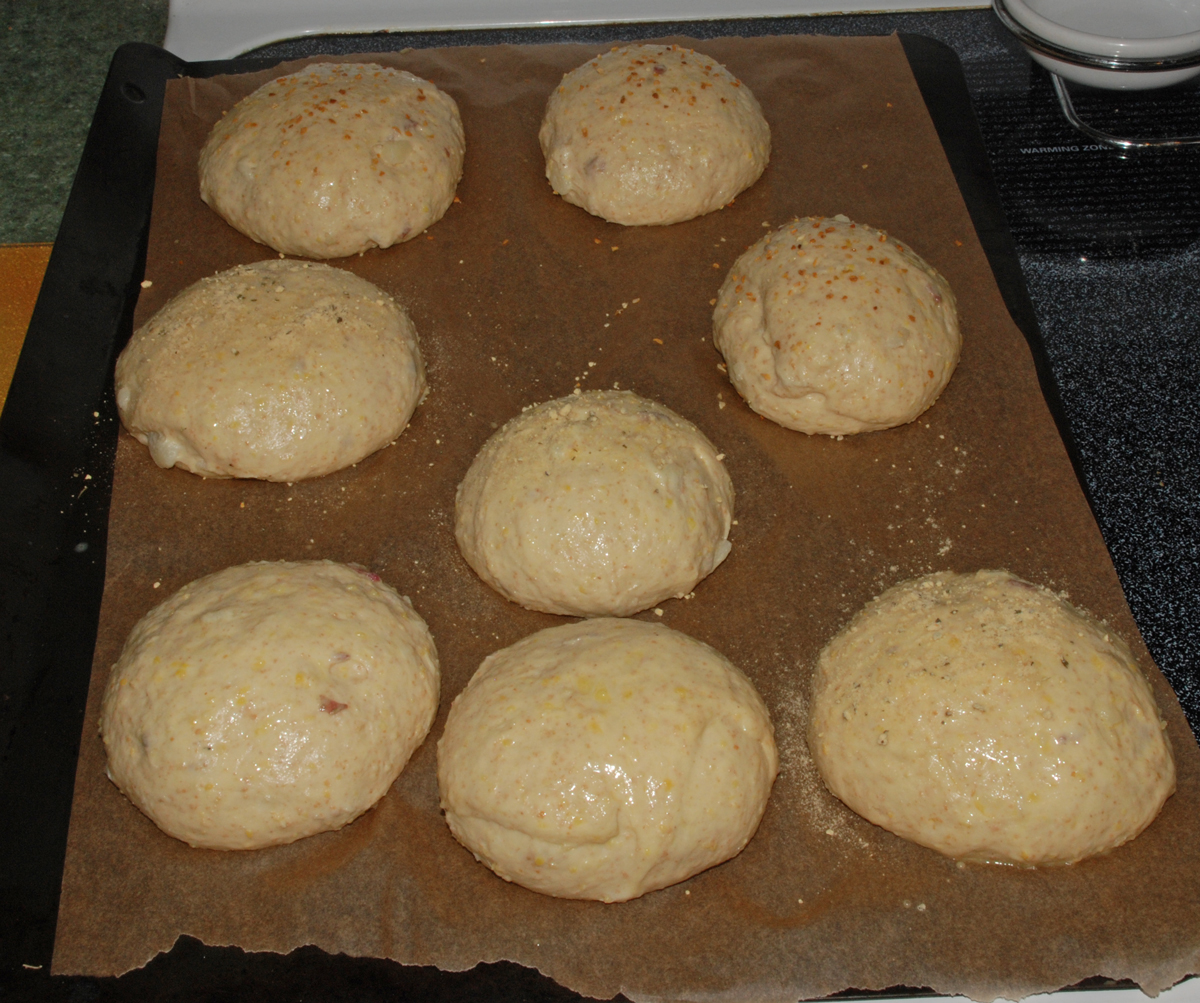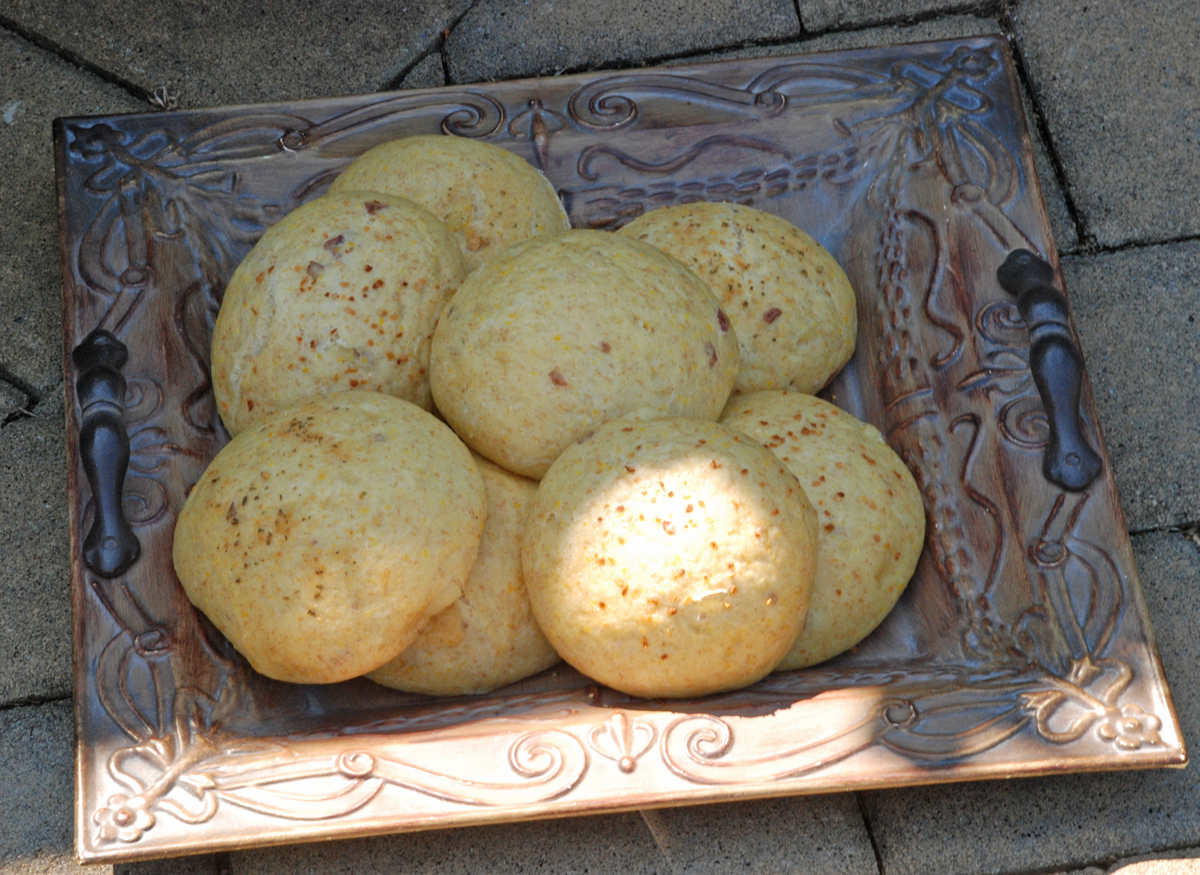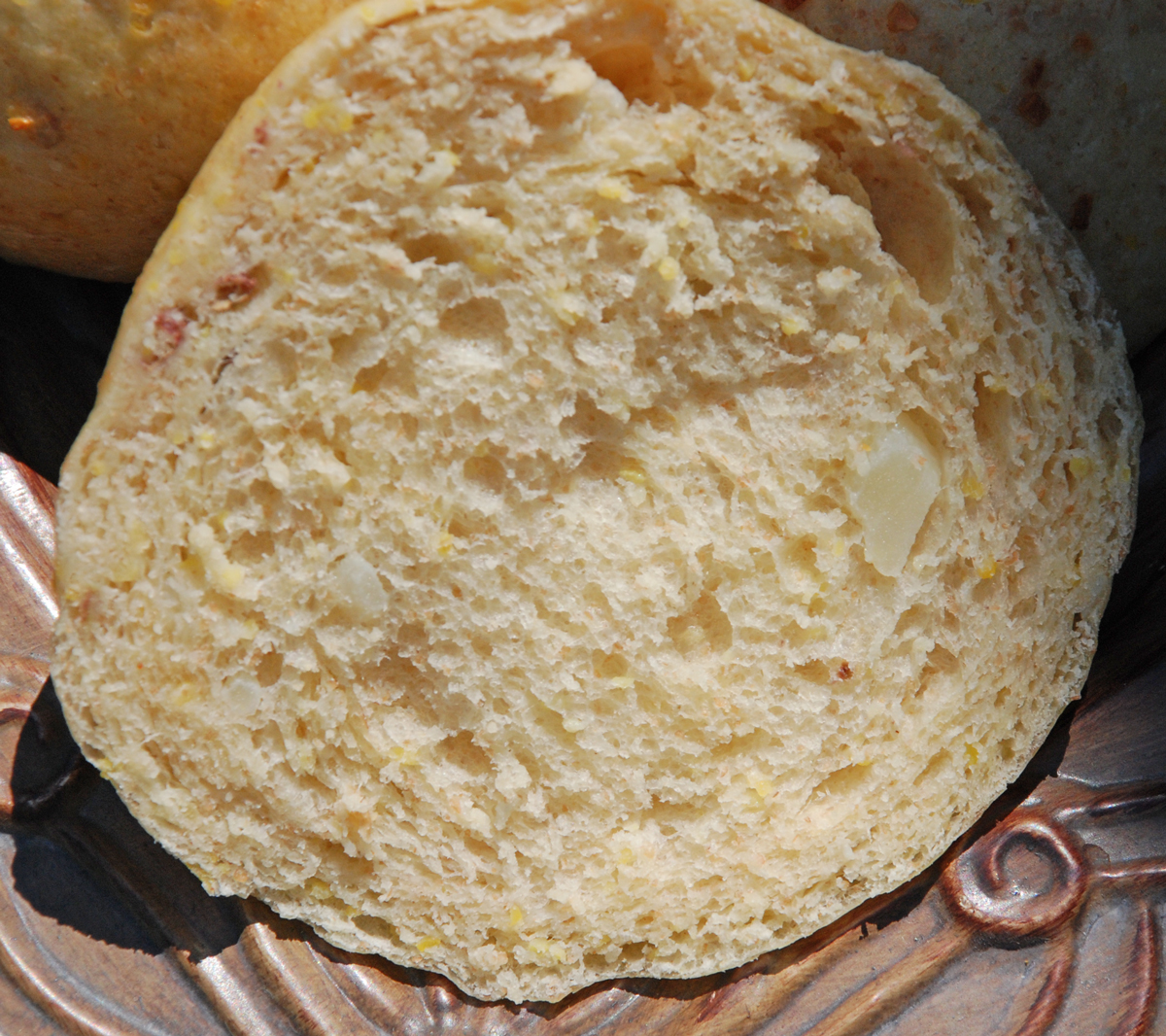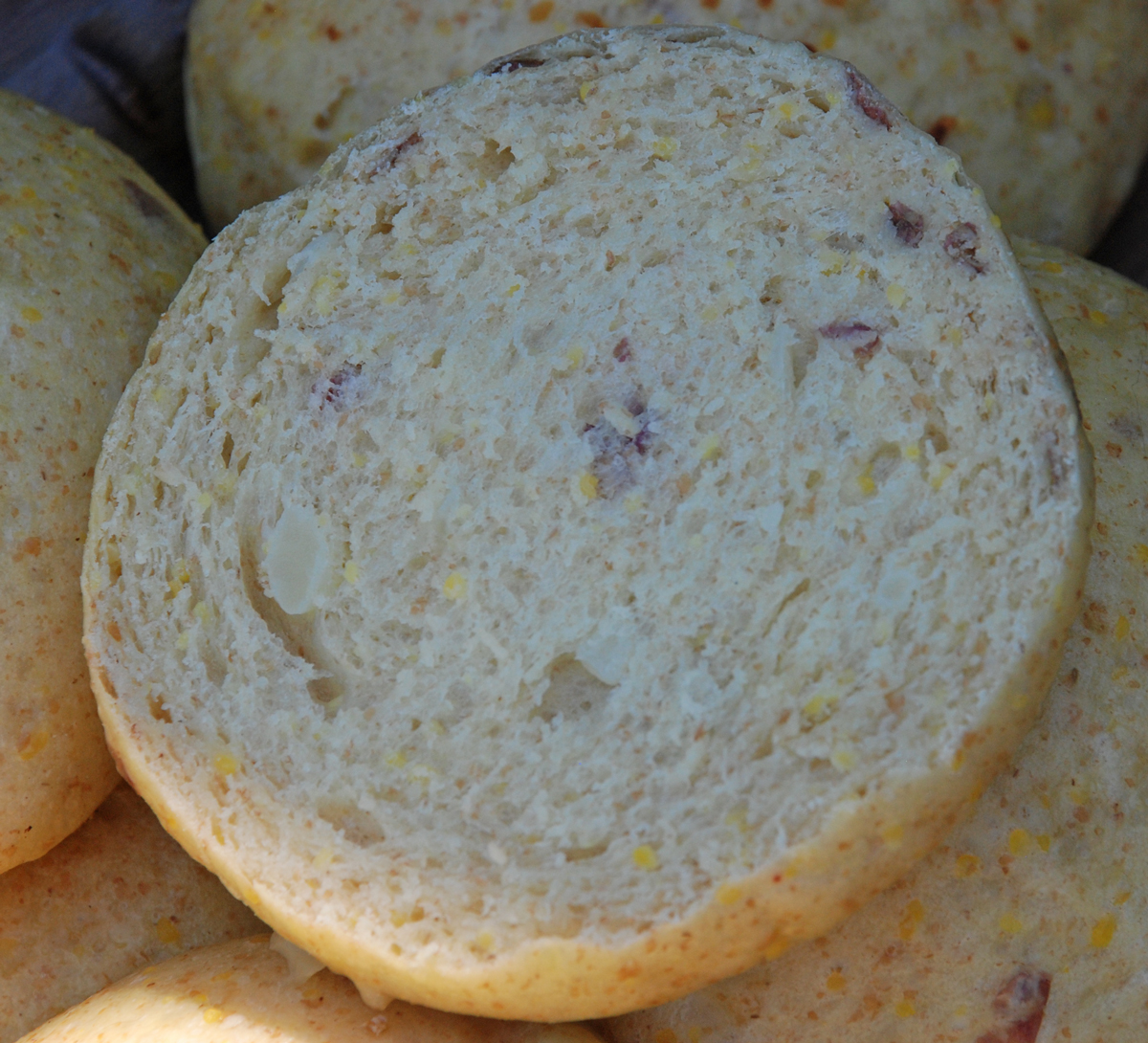
I just returned from a couple of days vacation visiting Newport Rhode Island. We had a great time visiting the shops, historic mansions and sailing the harbor.
I wanted to make some rolls/buns that we could use for hamburgers for today's lunch and I didn't have time to refresh my starters so I used some instant yeast for the first time in a long time.
Since these were going to be used for hamburger buns I wanted to make sure to use enough fat in the recipe to make sure they were nice and soft. I also wanted to try using some polenta in this recipe after reading about several other bakers trying it with great results. I decided to also use potatoes to give it some extra softness and for extra flavor I left them nice and chunky with the skin on.
I used an overnight retardation of the dough to build extra flavor as well. The end result was one of the best rolls I have made to date. They were nice and soft and moist inside and out and tasted good enough to eat by themselves. I am sure the polenta, potato combo along with the heavy cream I used contributed to the nice soft and moist crumb and crust. Next time I will try these with Wild Yeast Water instead to see how that impacts the crumb
.
Ingredients
550 grams Bread Flour (King Arthur Flour)
100 grams Whole Spelt Flour (Bob's Red Mill)
150 grams Whole Egg (3 large eggs slightly beaten)
1 Egg Beaten with Water for the Egg Wash
180 grams Polenta (cooked, and cooled)
160 grams Mashed Potatoes with Skins (I boiled a few potatoes and saved the water for the dough)
50 grams Extra Virgin Olive Oil
127 grams Potato Water at 85 - 90 degrees F.
142 grams Heavy Cream at 85 - 90 degrees F.
7 grams Instant Yeast
14 grams Seas Salt or Table Salt
40 grams Honey
Directions
Polenta
Prepare the polenta according to your recipe. I followed the simple directions on the package and only made half the recipe which still was 4 times the amount I needed. I added some grated Parmigiano Reggiano and butter at the end and also threw in some toasted dried onions for extra flavor. Left overs will be grilled later this weekend with some olive oil and more cheese on top.
Final Dough
Mix flours with yeast to combine. Next add remainder of the ingredients keeping about 30 grams of water back. Mix on low-speed or by hand for 1 minute and let the dough rest for 5-10 minutes to absorb the flour.
Add the balance of the water if needed and mix for another 4 minutes. The dough should come together and be scraping the side of the mixing bowl and be nice and fairly smooth but still tacky.
Remove the dough to your work surface and knead by hand for 1 minute. Do about 3-4 stretch and folds and put in a well oiled bowl or container with a cover. Put it in your refrigerator immediately.
You can keep it in your refrigerator for about 24 to 36 hours. I ended up baking it in the morning so it was only in my refrigerator for around 14 -15 hours. The dough should double while in the refrigerator.
When ready to bake the rolls or bread, take it out of the refrigerator and immediately weigh out your pieces or loaves and shape as desired. I made simple round rolls and let them rise for 1 hour on a cookie sheet with parchment paper.

After 45 minutes turn your oven up to 350 degrees F. and prepare your rolls as desired. I beat 1 whole egg mixed with a little water and put an egg wash on each roll. I also added some toasted onions to some and some dried cheese mix on some as well. At the 1 hour or so mark pop them in the oven with steam and turn once after about 15 minutes. These should take about 25 minutes to cook thoroughly.
Let them cool on wire rack for at least half an hour before digging in if you can wait that long.
Please feel free to visit my other blog at www.mookielovesbread.wordpress.com for more recipes.



Below are some photos of my Summer Cottage at New Port :) as well as some other interesting sites.

- The Breakers....owned originally by Cornelius Vanderbilt II

- The Breakers

- Animal Topiary Gardens

- More Animal Topiary Gardens

- Jacky Kennedy's Childhood Summer House

- Playhouse for Jacky Kennedy when Child. Note: I think it is bigger than my current house!

- Oldest Tavern in USA originally built in 1642.



